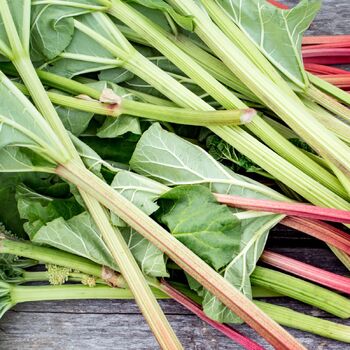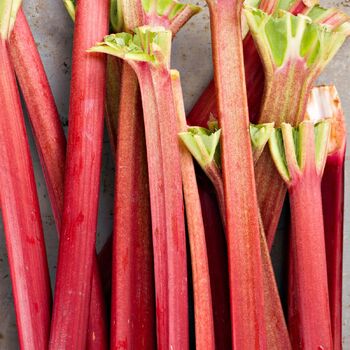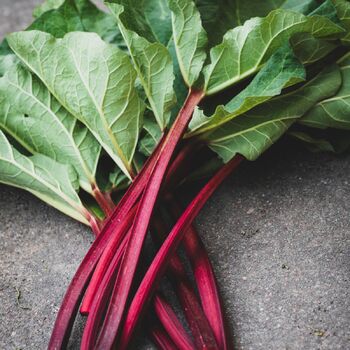
How to Grow Rhubarb Crowns
Grow Guide #2345
Family: Polygonaceae
Binomial name: Rheum rhabarbarum
Life Cycle: Perennial
This 'How to Grow' guide details everything a home gardener needs to know to plant, grow and care for Rhubarb (Rheum rhabarbarum).
When to Plant Rhubarb Crowns
Rhubarb is a perennial plant that grows year round in most climates. Use the table below to identify the best time of year to plant rhubarb crowns in your climate.
| JAN | FEB | MAR | APR | MAY | JUN | JUL | AUG | SEP | OCT | NOV | DEC | |
|---|---|---|---|---|---|---|---|---|---|---|---|---|
| Cool | ||||||||||||
| Temperate | ||||||||||||
| Sub-Tropical | ||||||||||||
| Tropical | ||||||||||||
| Arid |
Preparation
Rhubarb plants are perennial, meaning they live for several years. Choose a permanent position where plants can grow undisturbed by regular digging.
Rhubarb plants are best grown in full sun or part shade. Choose a location that will receive at least 3 hours of full sun each day.
Rhubarb plants need a well drained soil enriched with plenty of organic matter. Prepare soil by weeding it thoroughly, digging it over to loosen it and adding aged animal manure or compost. Keep the area free of weeds until planting. Learn more about preparing soil for planting here.
Rhubarb plants can be grown in containers. If possible choose a variety that’s recommended for container growing. Use a good quality potting mix and make sure your container is large enough for mature plants; a minimum of 75 litres is recommended for rhubarb. During the growing season, keep in mind that container grown plants may need additional fertiliser to encourage healthy growth.
How to Plant Rhubarb Crowns
Plant rhubarb crowns soon after delivery; store crowns in damp coir or potting mix to keep them hydrated until planting.
- Trim any damaged leaves or roots from the crown.
- Dig a 20cm deep hole and make a mound in the centre.
- Place the crown on the mound so the growing point is facing up and level with the surface of the soil. (see images below)
- Cover with soil, making sure the tip of the crown is not covered. (see images below)
- Space crowns 50cm apart.
- Water in well.
- Keep soil moist but not wet until the first stalks and leaves appear.
How to Grow Rhubarb
Rhubarb plants may need watering during the growing season. Water when the soil is dry about 5cm below the surface (test this by scratching away a little soil with your finger). Water deeply in the early morning or late afternoon. Avoid watering the leaves of plants to avoid fungal diseases. Learn more about watering here.
If soil was well prepared no extra fertiliser should be necessary. In poor soil or to give your plants an extra boost, application of a balanced fertiliser or one formulated for fruit and vegetables can be beneficial:
- Apply slow release fertiliser at the recommended rate when transplanting or when seedlings are 5-10cm tall.
- Apply liquid fertiliser at the recommended rate and frequency while plants are fruiting or flowering.
Tip: To extend the harvest, remove flower stalks as soon as they appear.
Optional: For the strongest plants, do not harvest stalks in the first year of growth.
How to Harvest Rhubarb
Rhubarb should be ready to harvest in approximately 100-140 days.
Rhubarb stalks are ready to harvest when they are large enough to eat. Harvest the outside stalks first, leaving some in the centre of the plant for future growth. Harvest individual stalks by pulling and twisting them gently from the base to separate them from the plant. Cut off the leaves and dispose of them in the compost or green waste. Rhubarb stalks can be stored short term in the fridge. For longer term storage, rhubarb can be canned or frozen.
Warning! Do not eat rhubarb leaves, they are toxic.
Common Problems when Growing Rhubarb
Like all plants, rhubarb is susceptible to some pests, diseases and other problems. Below is a list of the most common problems gardeners encounter when growing rhubarb plants:
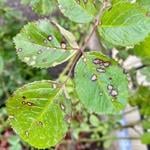 Bacterial leaf spot is a disease that causes irregularly shaped brown spots on all above-ground parts of a plant. The spots at first appear to be wet but become dry and scab-like over time. Leaves and flowers can fall prematurely. Water plants at soil level (not on the leaves), dispose of fallen leaves and fruit and practice crop rotation.
Bacterial leaf spot is a disease that causes irregularly shaped brown spots on all above-ground parts of a plant. The spots at first appear to be wet but become dry and scab-like over time. Leaves and flowers can fall prematurely. Water plants at soil level (not on the leaves), dispose of fallen leaves and fruit and practice crop rotation.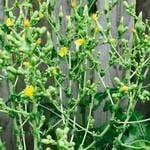 Bolting is when a plant prematurely flowers and goes to seed. Bolting can be caused by a period of extreme weather. Avoid sowing seed until after the danger of frosts has passed or in very hot weather. Water plants regularly and deeply in hot weather to prevent them suffering heat stress.
Bolting is when a plant prematurely flowers and goes to seed. Bolting can be caused by a period of extreme weather. Avoid sowing seed until after the danger of frosts has passed or in very hot weather. Water plants regularly and deeply in hot weather to prevent them suffering heat stress.%20(1).jpg) Rotten crowns are caused by pathogens entering crowns after sitting in cold, wet soil or being temporarily waterlogged. Crowns may show obvious signs of rot, have no roots or shoots, or produce stunted yellow leaves. Plant crowns in free-draining soil, raised garden beds or containers, and do not water crowns over winter unless soil is very dry.
Rotten crowns are caused by pathogens entering crowns after sitting in cold, wet soil or being temporarily waterlogged. Crowns may show obvious signs of rot, have no roots or shoots, or produce stunted yellow leaves. Plant crowns in free-draining soil, raised garden beds or containers, and do not water crowns over winter unless soil is very dry. Slugs and snails are molluscs that feed on tender leaves and shoots, mostly at night, leaving slimy trails behind them. Control them by removing their hiding places, keeping free range poultry, collecting them by torchlight or by placing traps. Read more about slugs and snails here.
Slugs and snails are molluscs that feed on tender leaves and shoots, mostly at night, leaving slimy trails behind them. Control them by removing their hiding places, keeping free range poultry, collecting them by torchlight or by placing traps. Read more about slugs and snails here.
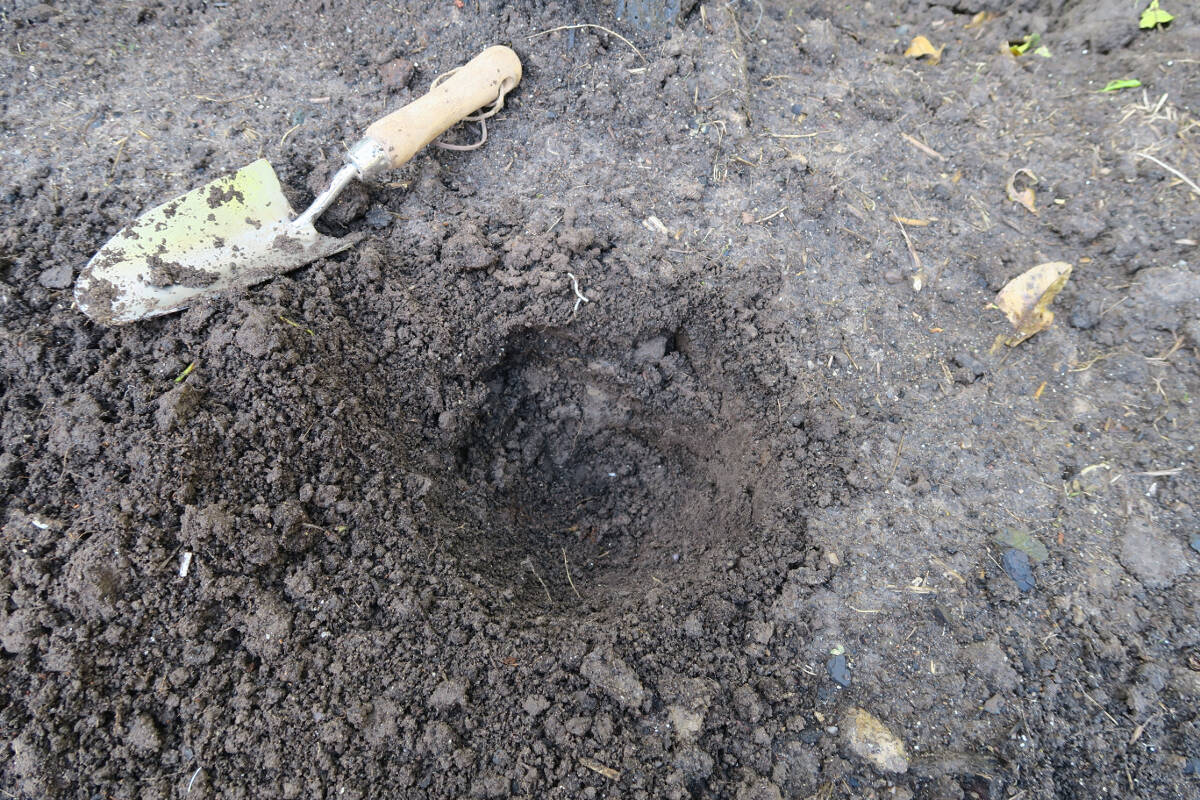
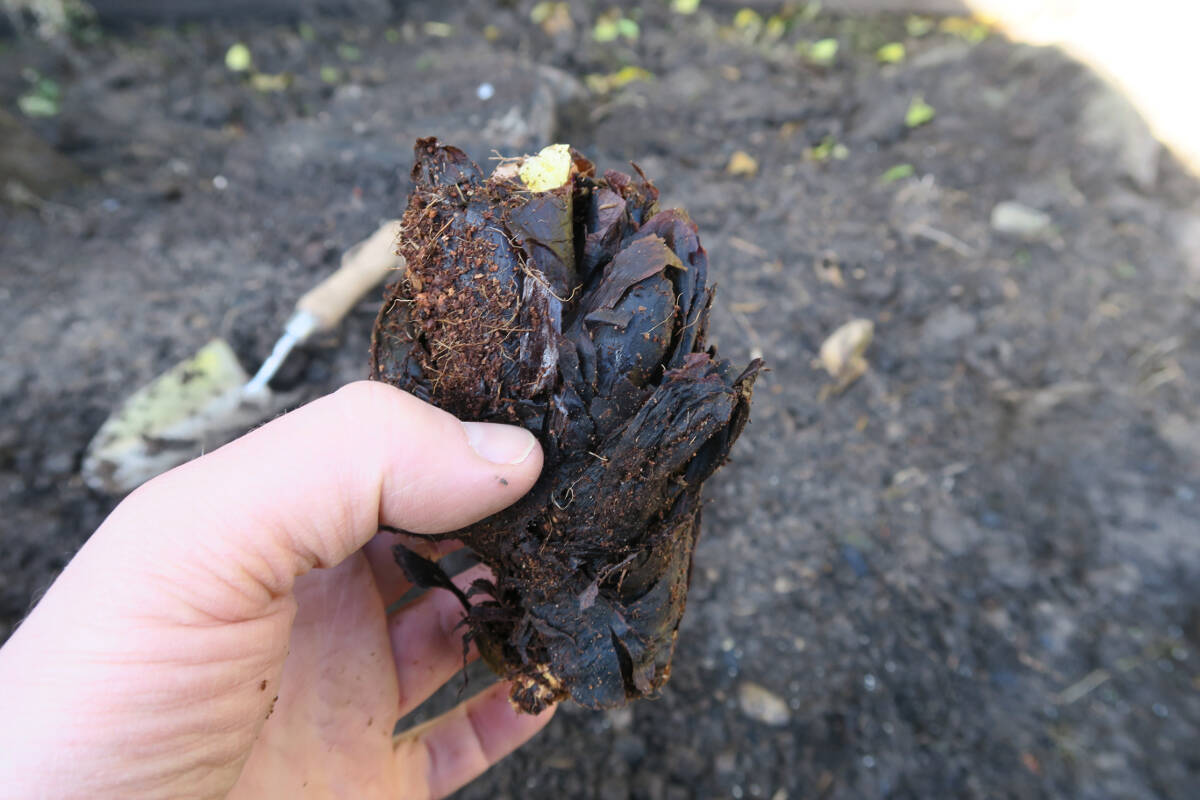
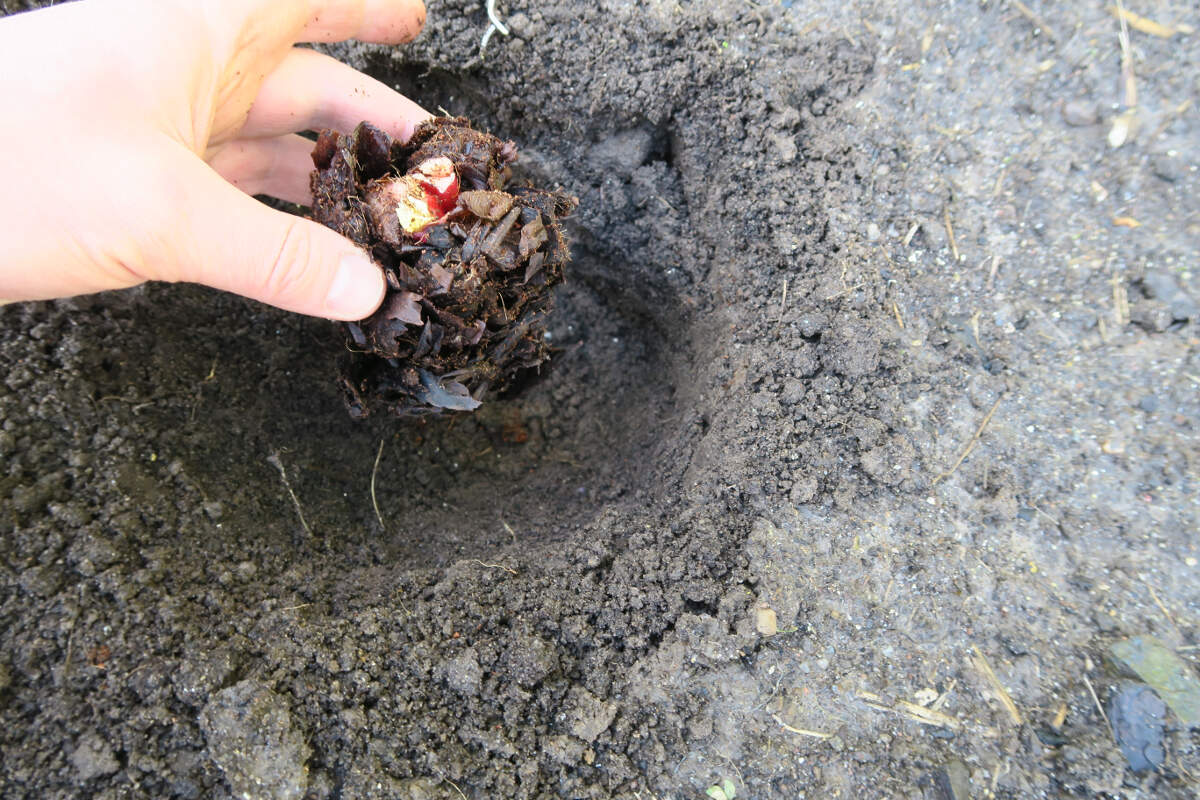
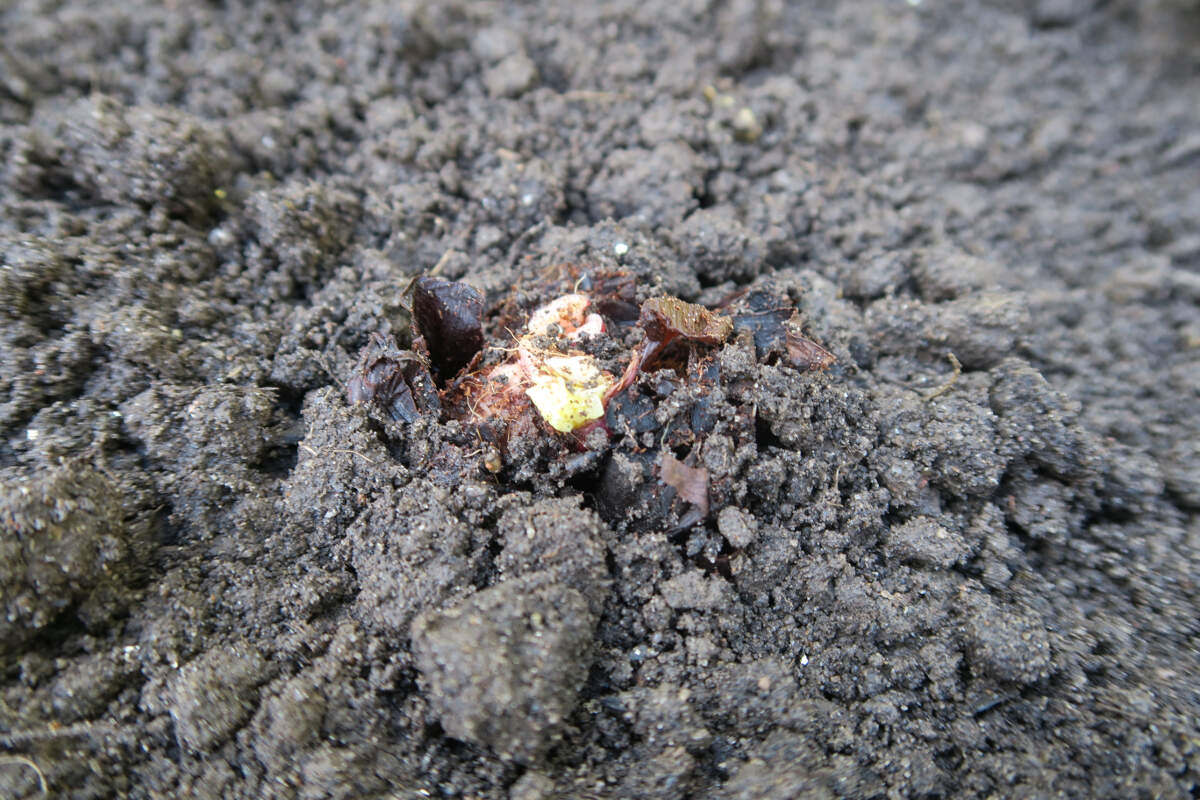
Orientation
Rhubarb crowns come in all shapes and sizes and may have visible cuts on them where they were separated from the parent plant. The pictures below are included to help show the correct planting orientation; with the growing points facing upwards.
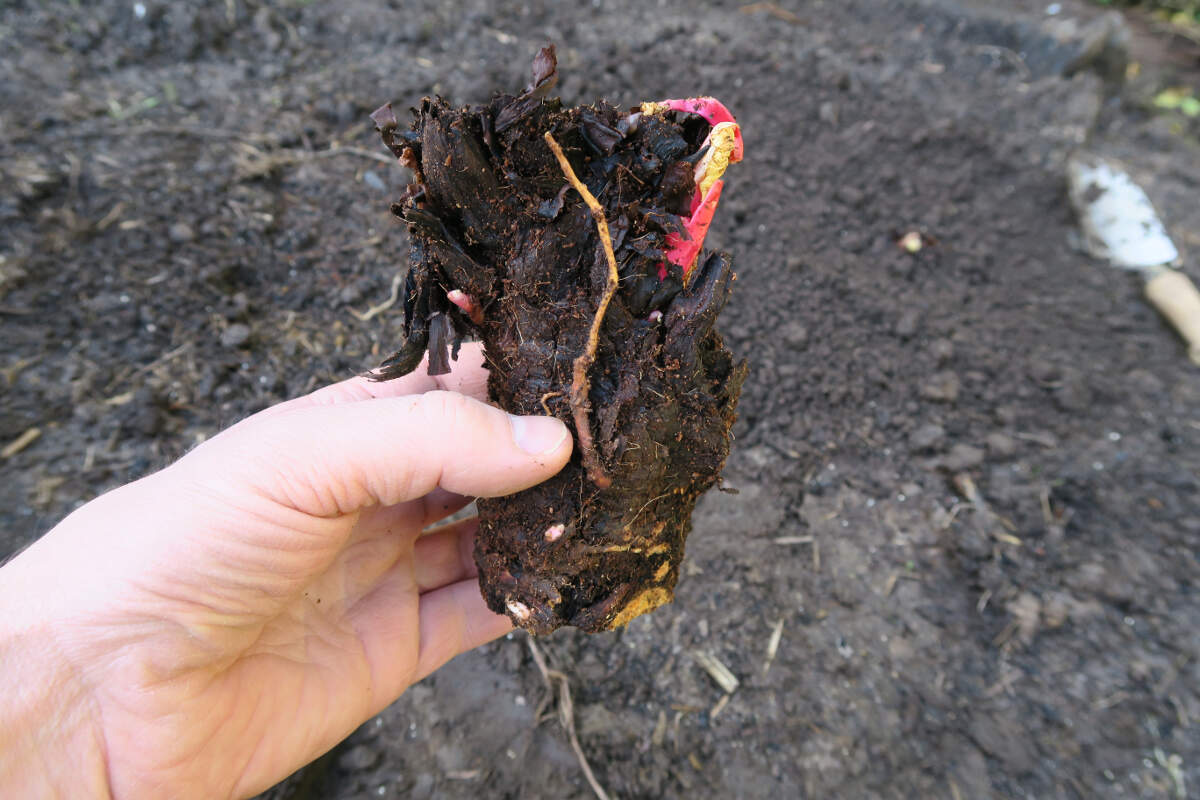
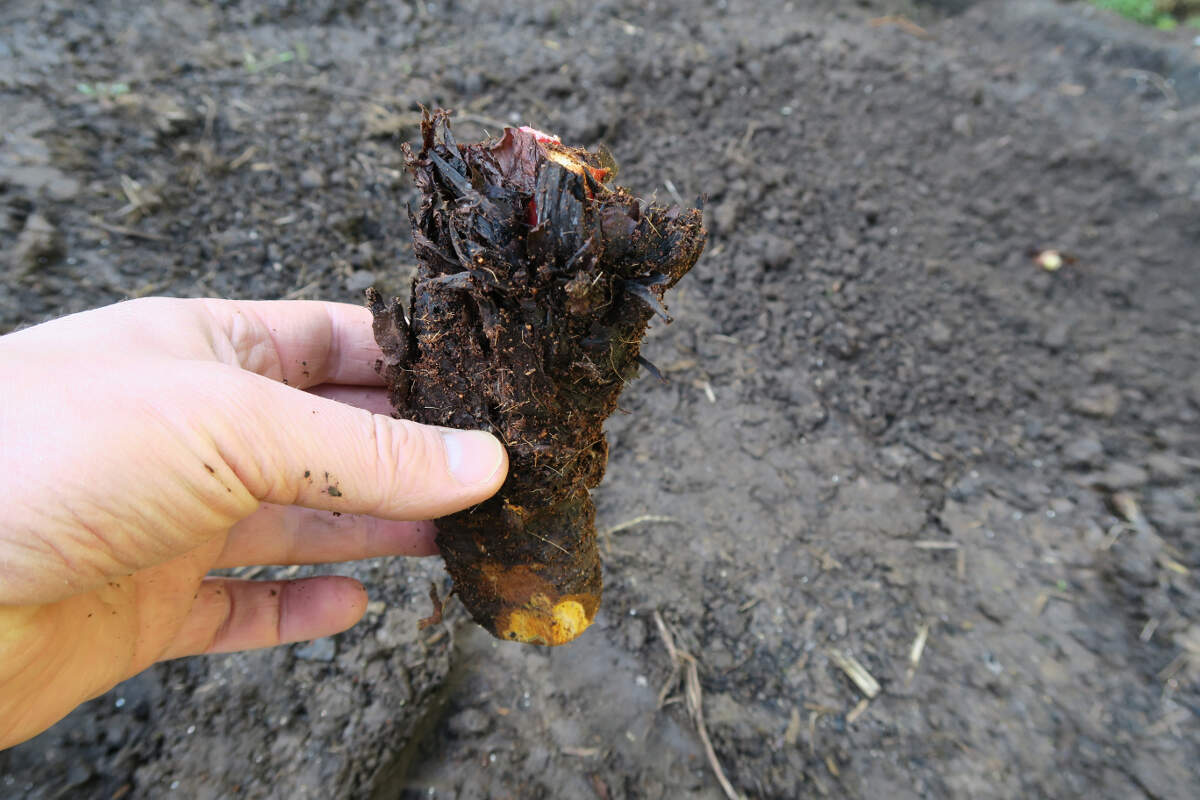
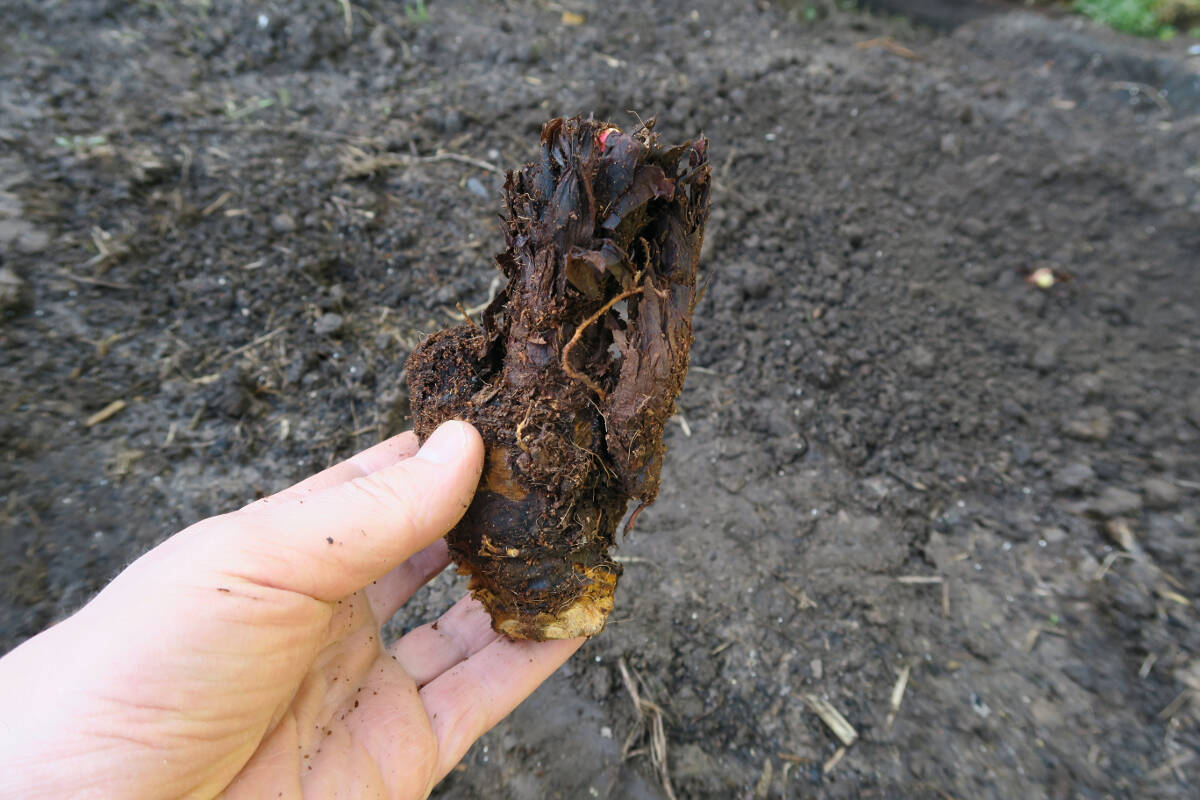
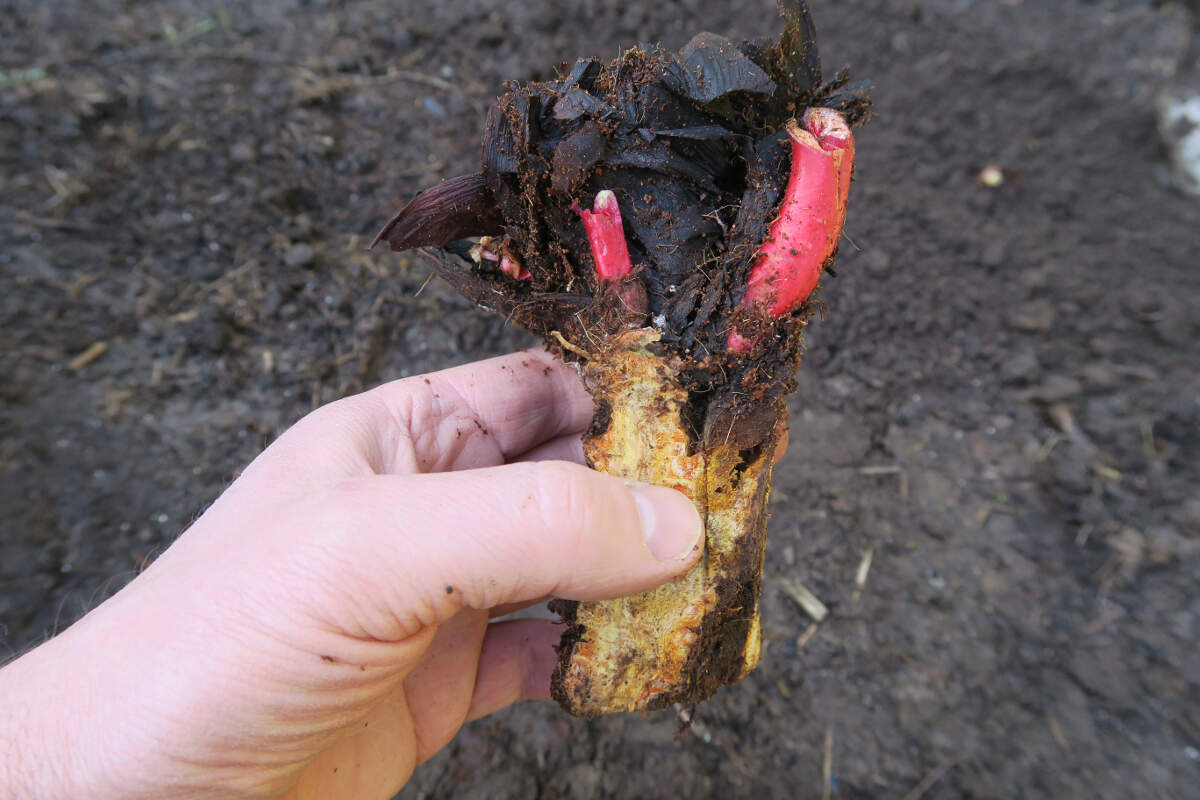
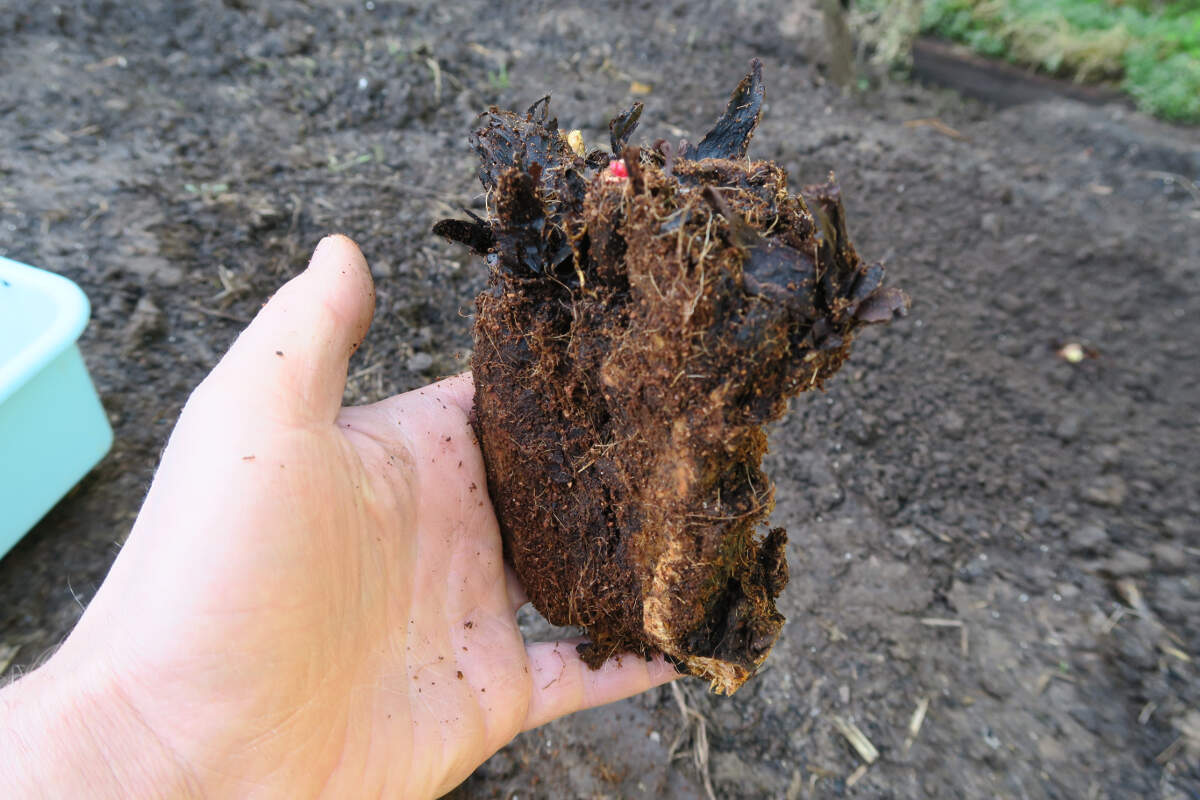
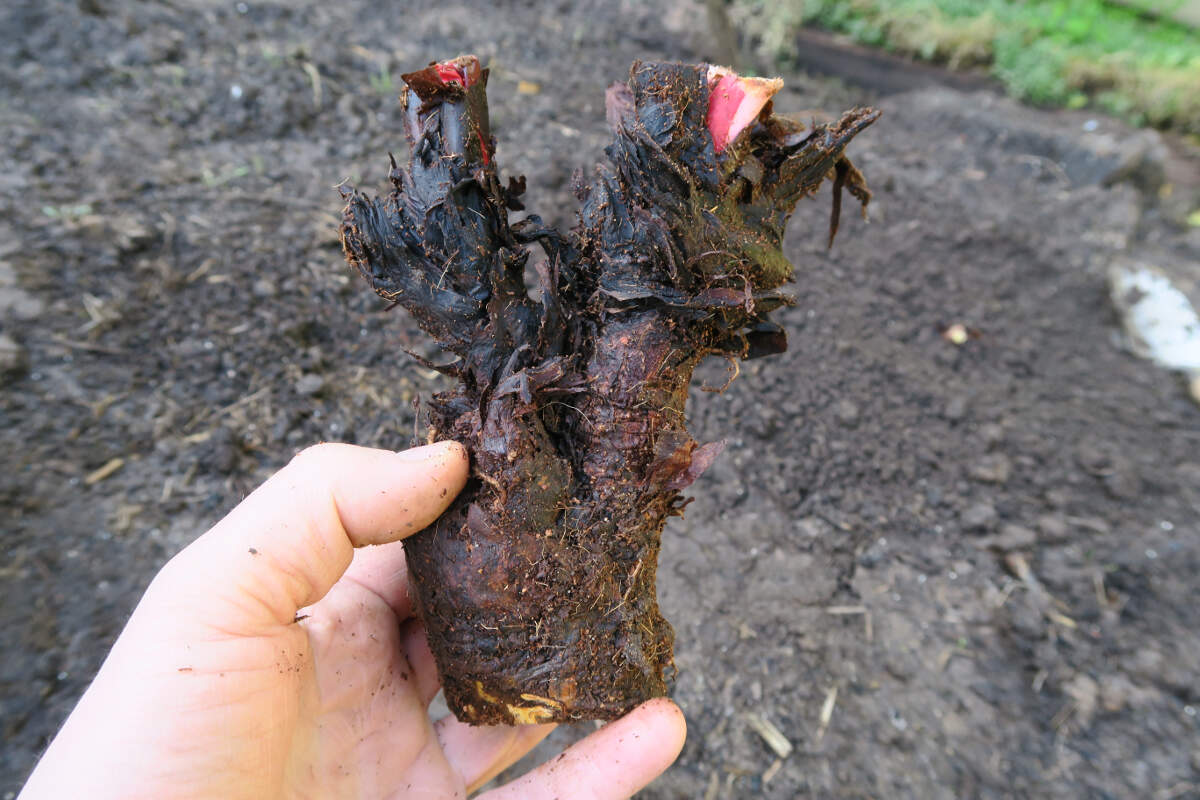
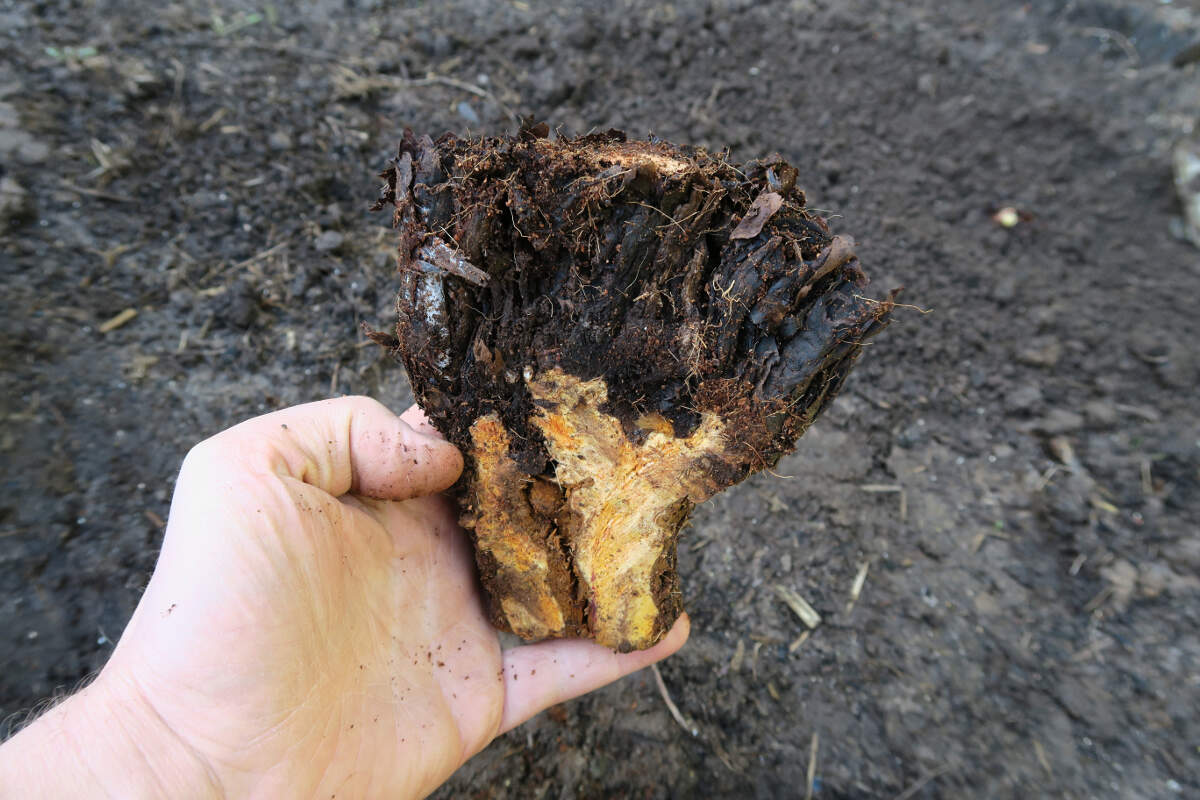


.png)



